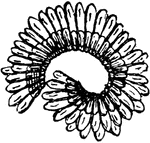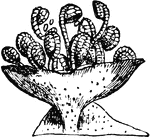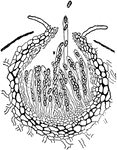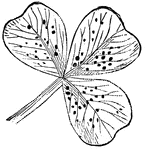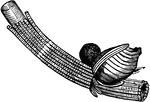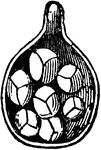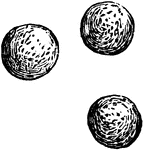Clipart tagged: ‘spores’
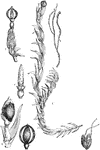
Andrea nivalis
"Andrea nivalis, natural size; 2. the same much magnified; 3. spore-case with the torn calyptra; 4.…

Microscopic view of a fermented apple
"Portions of the rotting pulp were placed on a microscopic slide, divided into hundredths and thousandths…
Willow Canker
"Scleroderris fuliginosa. b, ascus containing spores and accompanied by paraphyses ... S. fuliginosa…
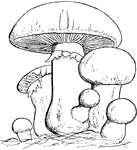
Common Mushroom
"Agaricus- A large and important genus of fungi, characterized by having a fleshy cap or pileus, and…

Danaea
"Danaea alata. 1. Collection of spore-cases; 2. sections of the same and spores, 2 of which are highly…

Aerialroot Bristle Fern
The spore-cases and cup of Trichomanes radicans or the Aerialroot Bristle Fern.

Flocci and Spores
"1. Polyplocium inquinans, divided vertically, natural size; 2. flocci and spores; 3 and 4, the same…

Spores of Fungi (Agaricus)
These spores of fungi are species of the genus Agaricus. Most of these species have colorless spores…

Fungus
"Pisomyxa racodioides, Corda.-1. Natural size; 2, the fungus greatly magnified; 3, a spore-case bursting…

Stages of fungus growth
This illustration "represents its mycelium growth; 2,2 its budding cells, which terminate in fruit cells;…
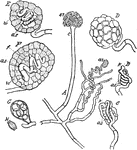
Eurotium Fungus
"Eurotium repens. A, a small portion of the mycelium with a conidiophore (c), terminated by the sterigmata…

Scab Fungus
"The Scab-fungus (Venturia inaequalis). a, an infested apple, showing scabs caused by the fungus; b,…

Ground Pine
"1. Spore-case of Lycopodium denticulatum opened; 2. antheridium; 3. spore." -Lindley, 1853
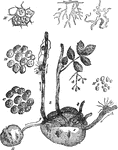
Potato Diseases at a Microscopic Level
"It is not unusual to fine a decayed spot in the center of potatoes otherwise apparently in good condition.…
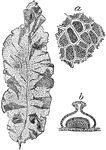
Marine Red Algae
"Grinnellia Americana. a, structure of the leaf; b, vertical section of a conceptacle, showing the chains…
Stem Rust
Also known as Puccinia graminis. This fungus is a significant detriment to cereal crops. It is currently…

